What is the Darwin Aboriginal Art Fair?
Darwin hosts two very important cultural events in the same week: the largest and most important annual event for Indigenous Australian art, the Darwin Aboriginal Art Fair (DAAF); and Couture to Country, the leading space to highlight the rise of Indigenous fashion and textile design.
It is a unique opportunity for over 1,500 artists from more than 70 Indigenous owned Art Centres to showcase their incredible creation from the world’s oldest living cultures.
DAAF commences with the excitement and glamour of the Indigenous Fashion Parades, immediately followed by the Art Fair. As well as celebrating the artforms that have been on the world stage for decades, the event is a celebration of Indigenous Australian cultural resilience and resurgence.
Dealers, gallerists and collectors from around the world fly in for this annual event and in 2023, fashion and design historian Dr Peter McNeil attended all that was on offer. In this article, Peter takes us through this showcase of First Nations art and fashion, and explains why it is a notable must-see on your cultural calendar…
When is the 2024 Darwin Aboriginal Art Fair?
The event will be held from August 9-11, 2024, during Darwin’s iconic “dry” season.
What are some of the highlights of the Darwin Aboriginal Art Fair?
DAAF Indigenous Art Fair kicks off with a welcoming ceremony on the first evening. There is a cultural performance and a great sense of occasion with a champagne reception. Attendees are then free to peruse the amazing art, all of which is for sale over several days.
The art spans all price points, from less than $50 to many thousands. The types of media on display range from paintings to carvings and ceramics, woven baskets and vessels, to lengths of screen-printed fabric. There is the opportunity to meet with both the staff managing the Art Centres, who are always very helpful and knowledgeable, as well as many of the artists themselves. All of the booths have infographics with maps and details about the location and focus of the art made there; it’s like a map of Australian First Nations’ art and design. There are also First Nations led workshops, such as jewellery making, to attend.
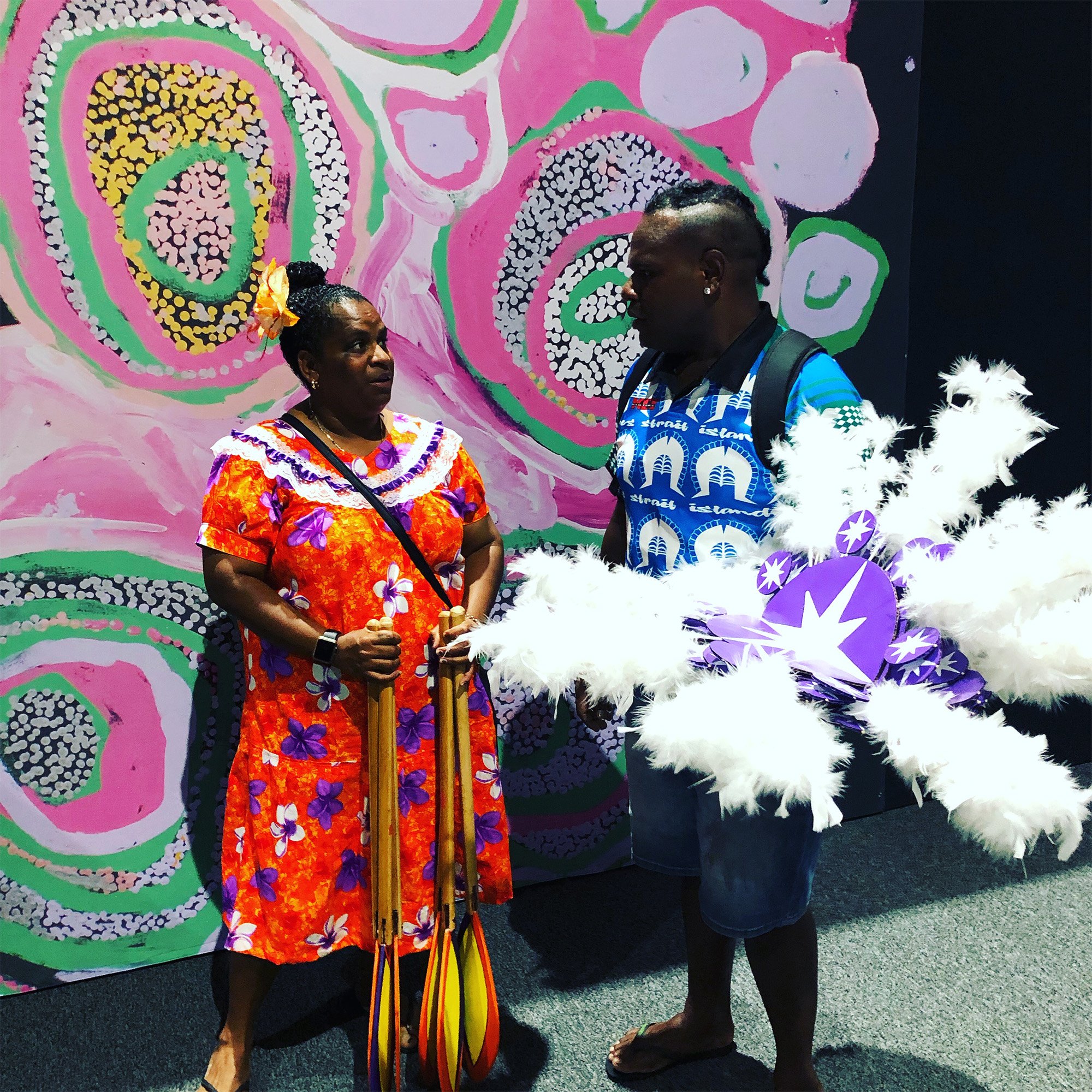

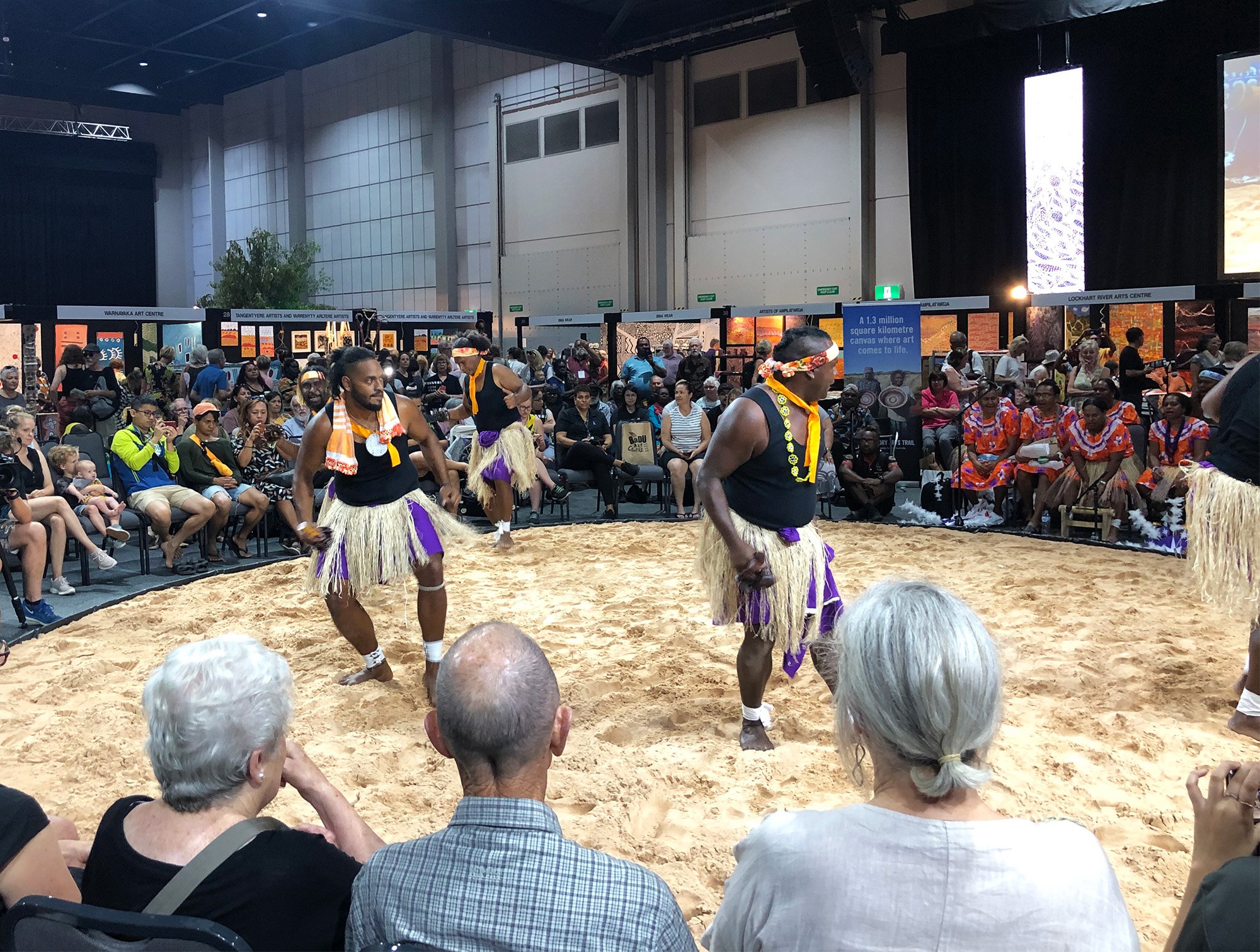
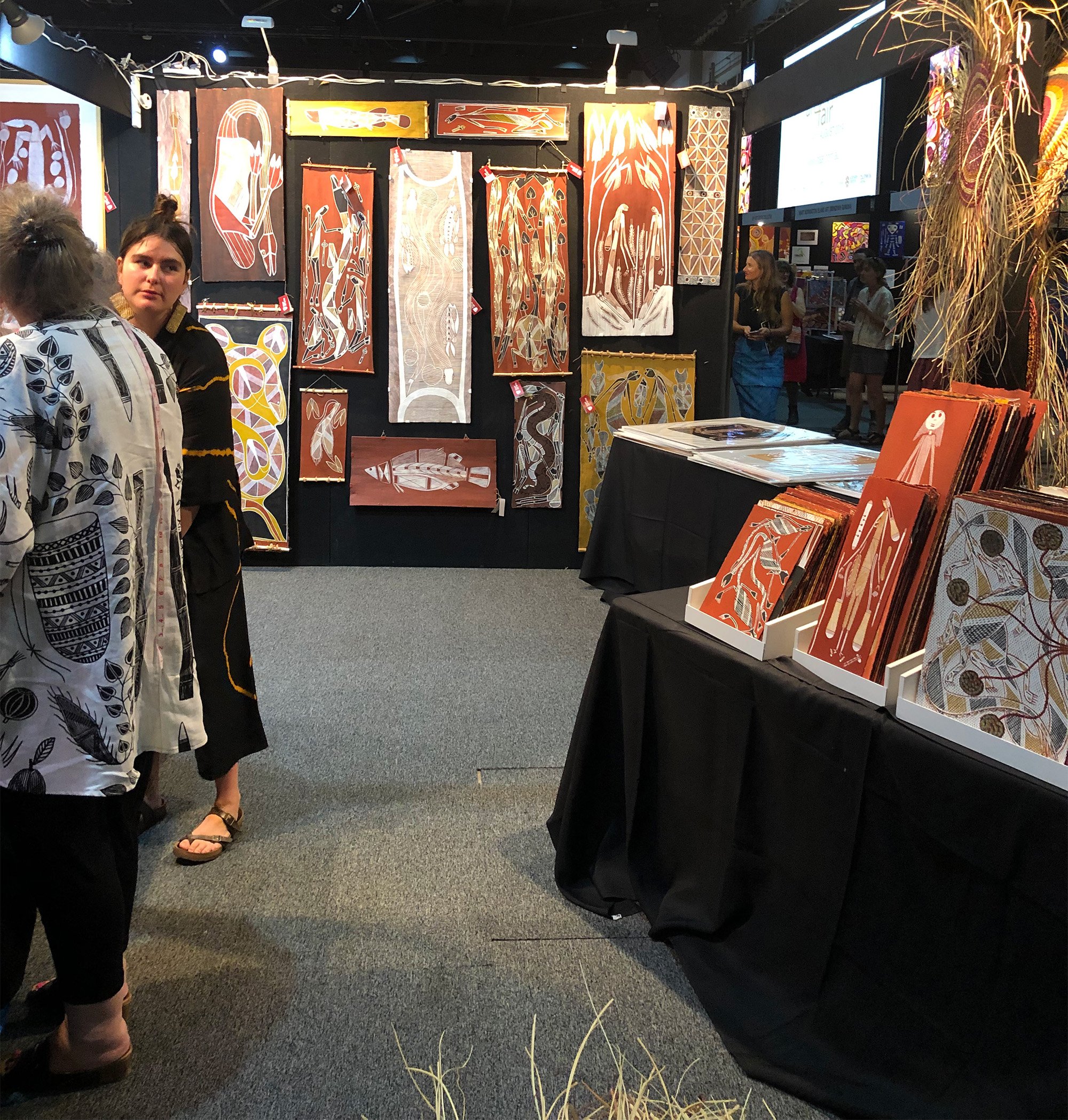
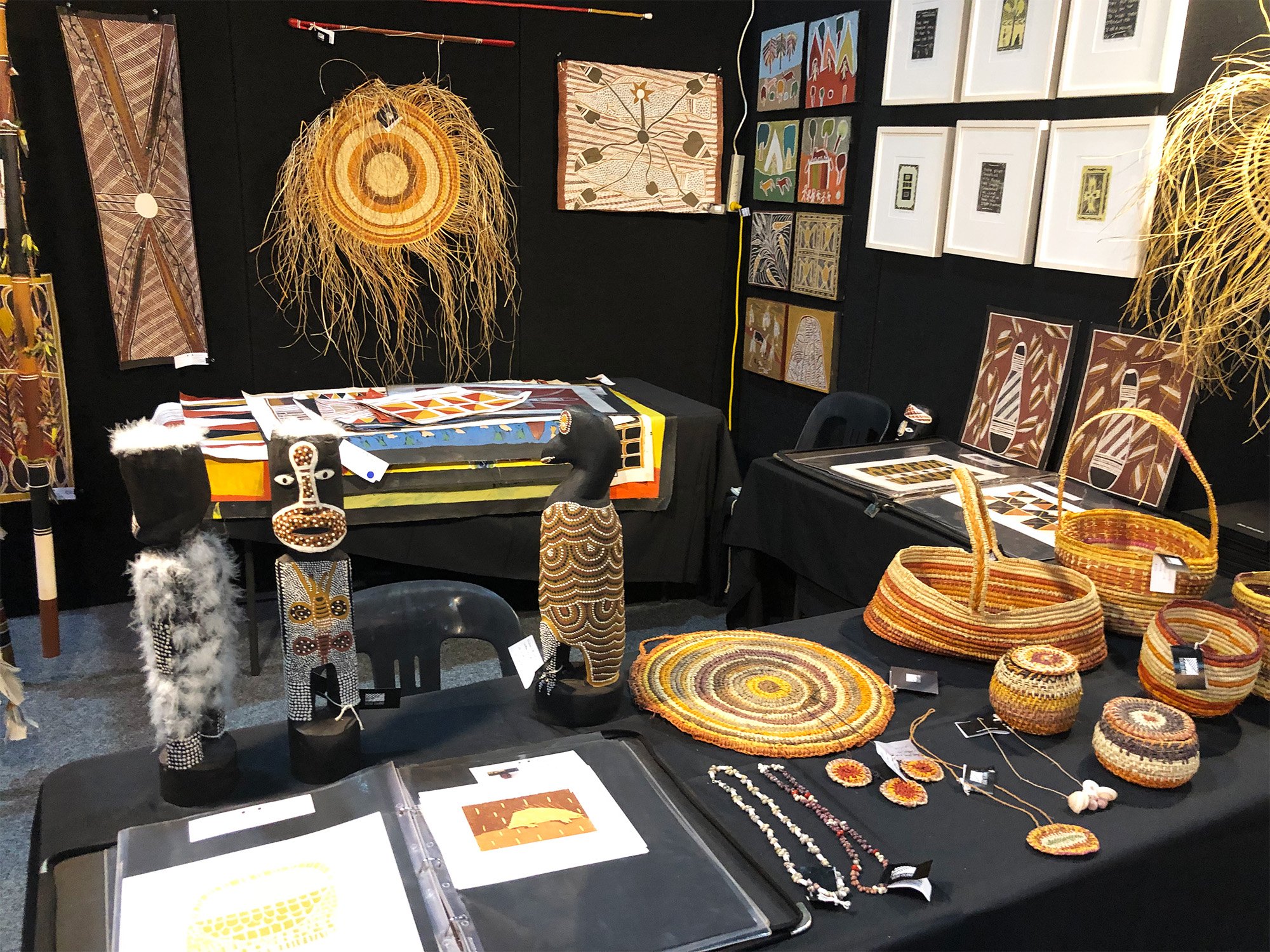
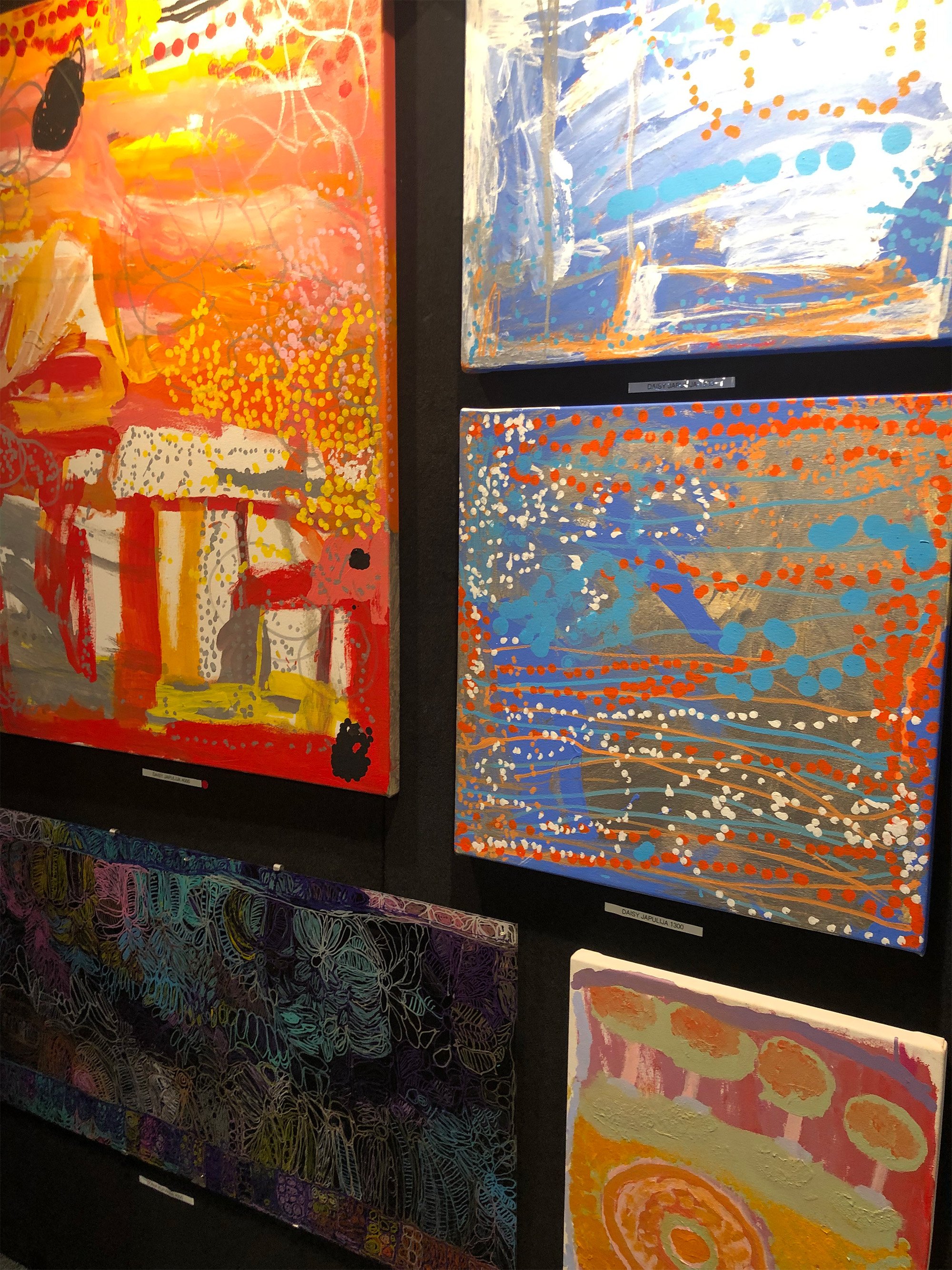
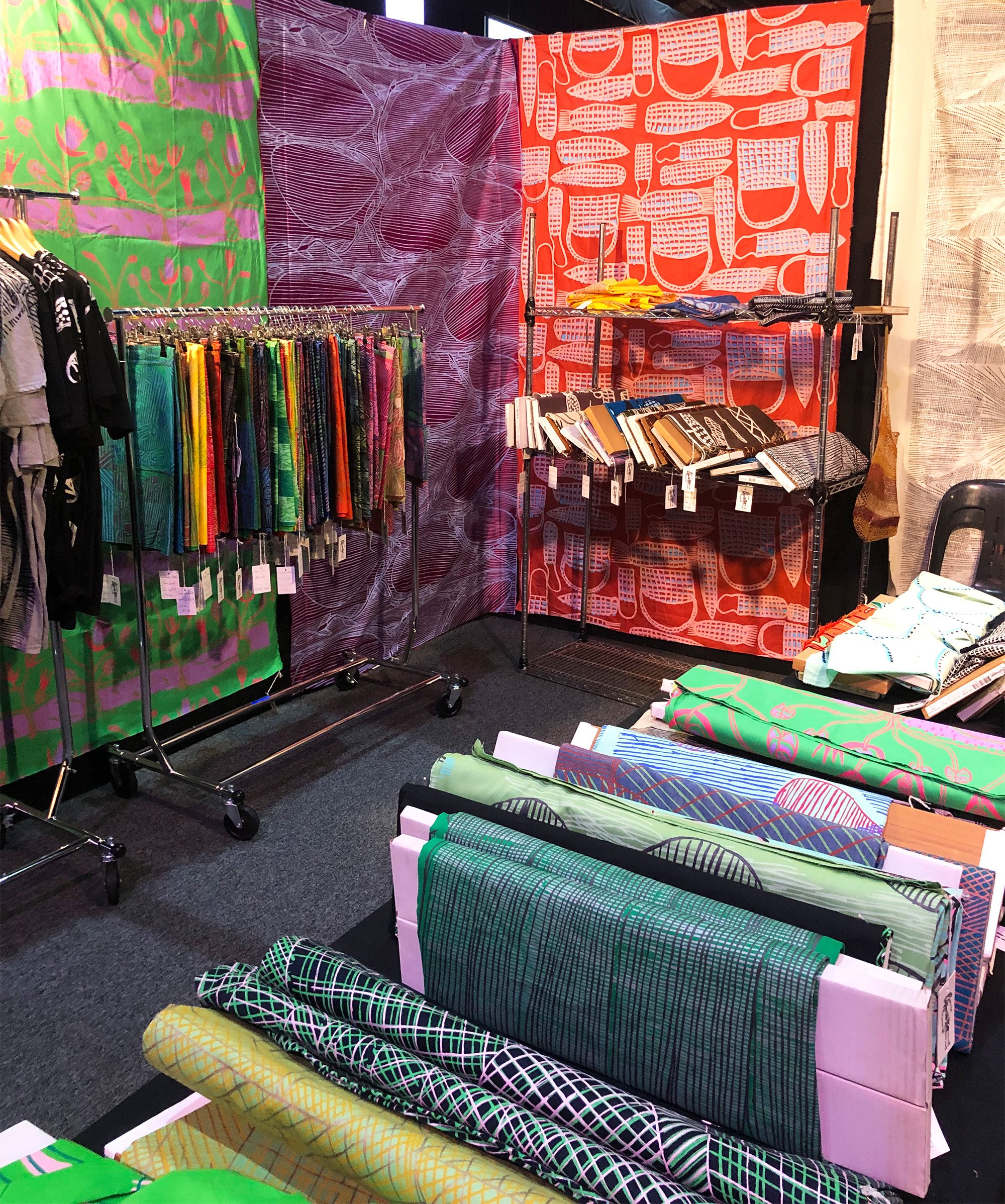
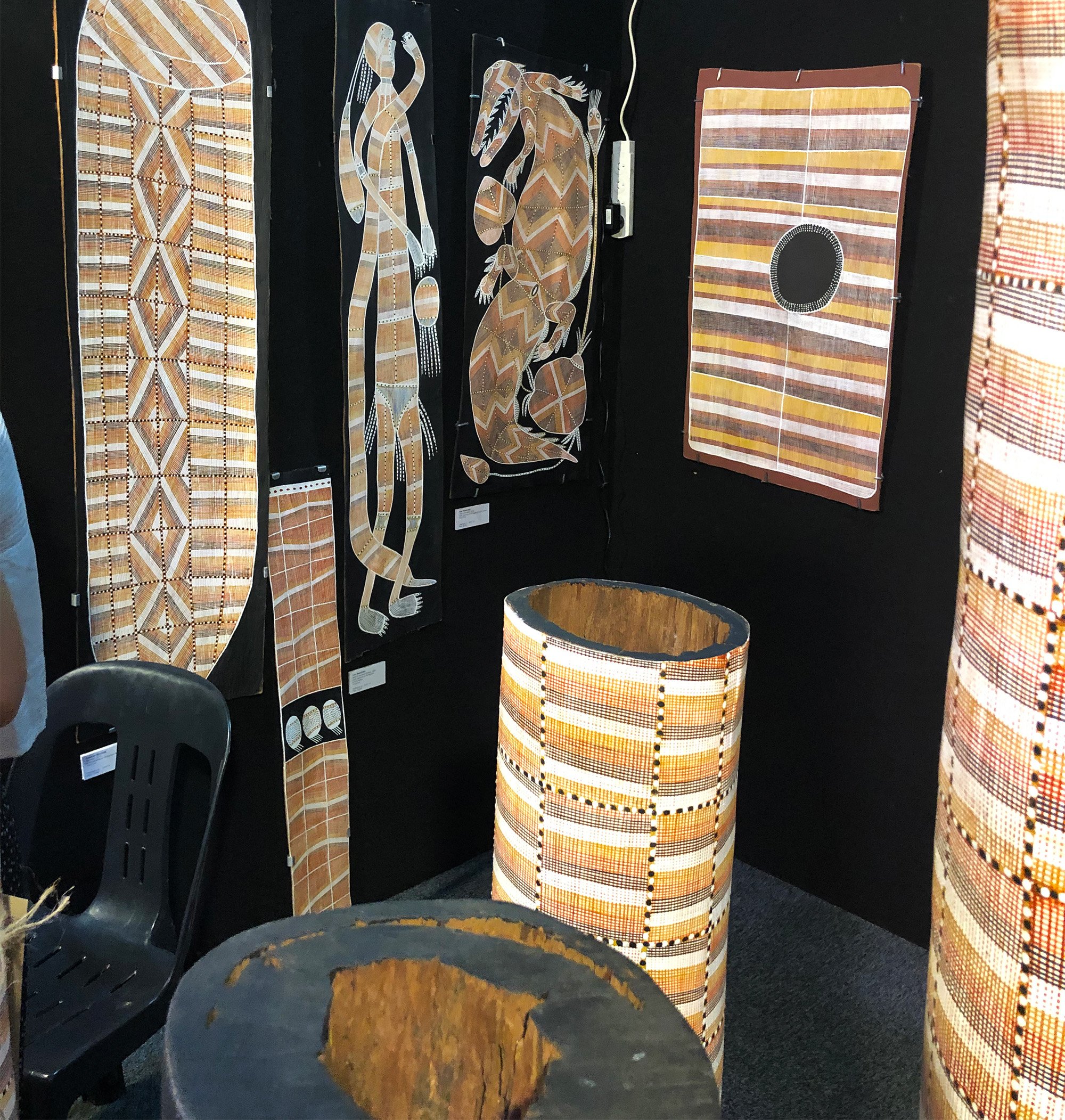
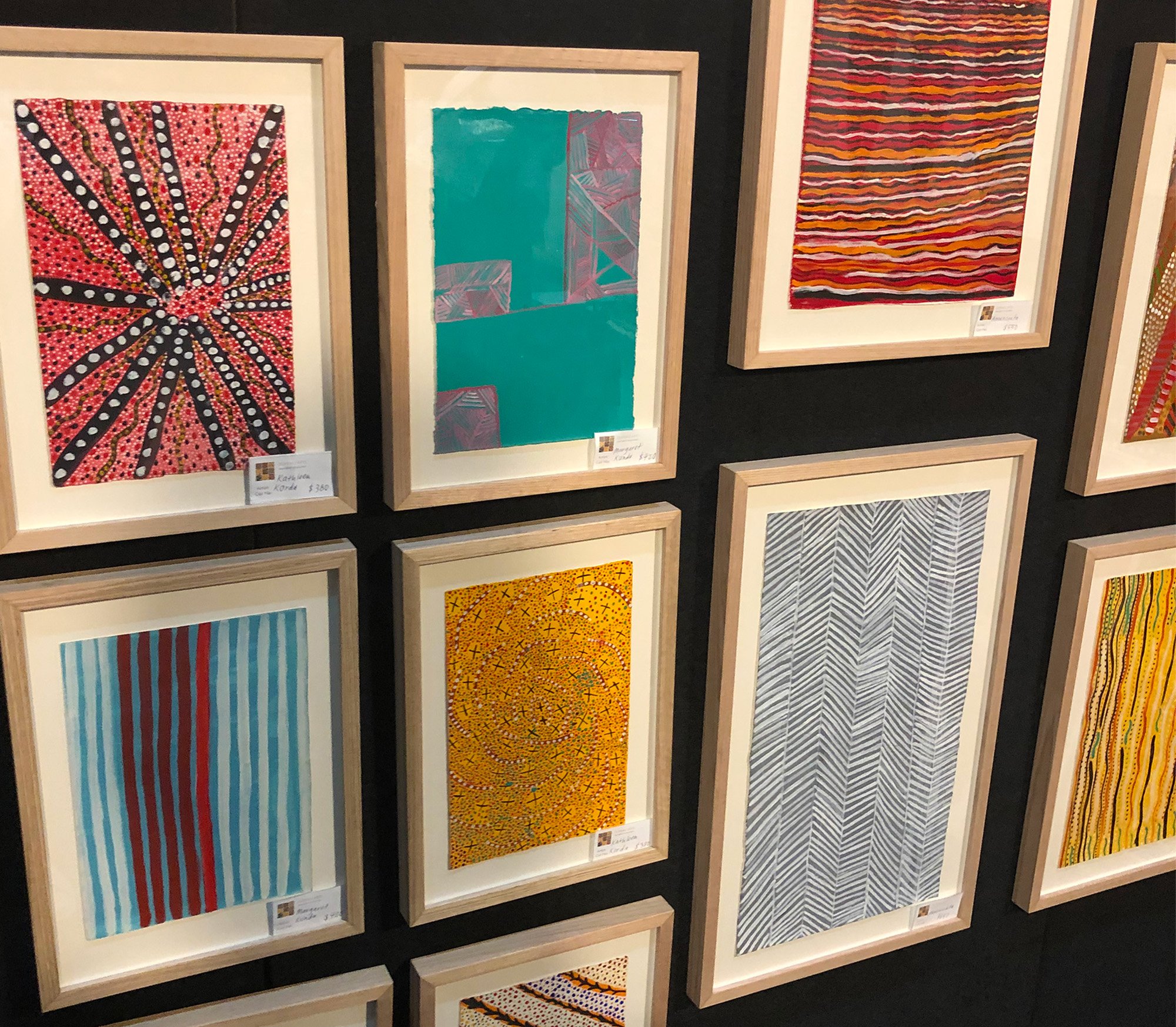
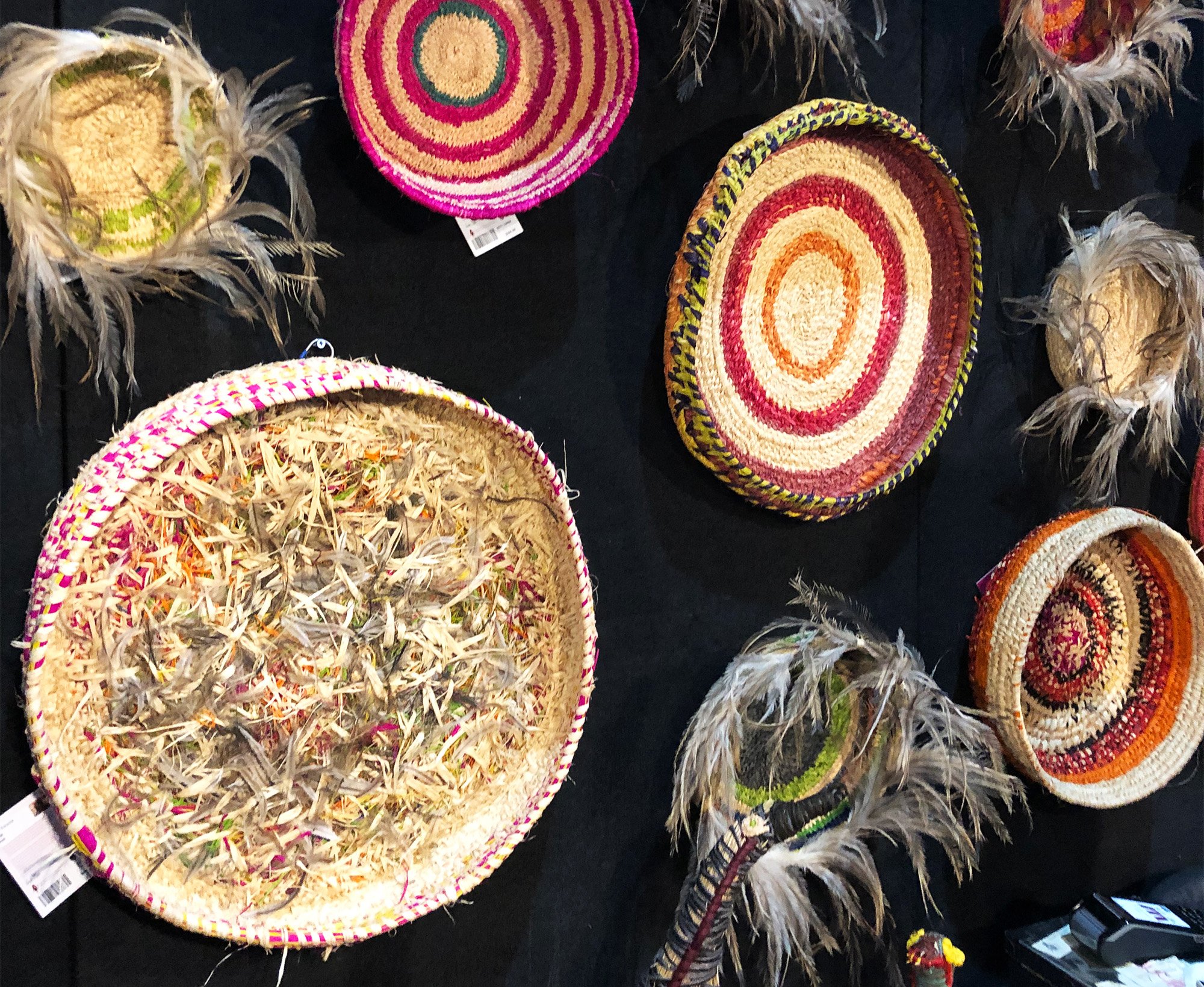
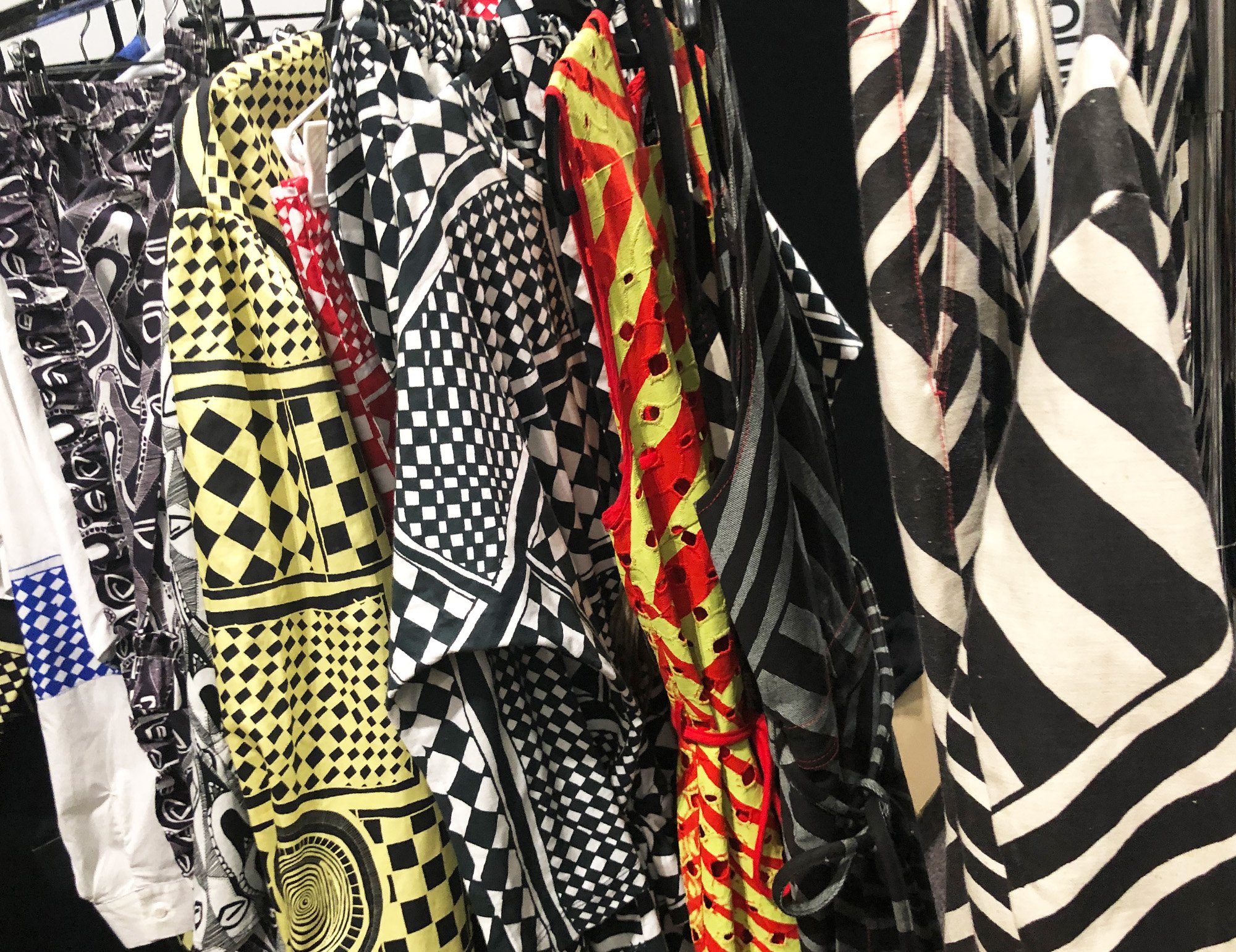
What else does DAAF celebrate?
The other highlight of DAAF is the inclusion of the Fashion Events. These have been growing in size and ambition every year and in 2023 included two spectacular choreographed fashion parades in the Convention Centre. Since at least the early 1950s, Indigenous Australians have been creating their own textiles, initially woven, later batik and block printed; now they might be hybrid digitally printed creations. The textile movement emerged within the older Mission culture and is now generated ethically at the 240 Aboriginal Arts Centres across Australia. The ‘textile revolution’ is now recognised as a major driver and the basis of a new wave of indigenous fashion design which empowers communities and leads to economic independence.
Attendees will see both women’s and men’s wear and all the models, as well as the scenography and the music, are indigenous. Expect to see the bright and creative art forms translated to cloth and clothing as well as fibre arts translated into baskets, hats and accessories. Diverse looks and all body types show us that fashion is much more than the Paris catwalk. It empowers people and provides them with new ways to say ‘I am black and proud’ and ‘I support this First Nations design’. There is the opportunity to learn about the cultural, social and also economic value of connecting textiles to the global contemporary fashion system in more systematic and sustainable manners. After all, this is an industry worth 11.7 billion AUD. A lot of this is about ‘slow fashion’ - being thoughtful, knowing the origins of each item, and understanding what the designs mean to the makers.
A Fashion Awards event is held the next day at dusk, nearby, in a beautiful open air deck chair ‘cinema’. Sit down and engage with the voices, stories, and case studies of the Indigenous fashion movement. Awards range from Community Collaboration to Adornment. Watch the very professional presentation of the televised awards in a beautiful tropical plant filled area. Short films are played about the winners and the various arts centres and I learned a great deal both about the art and the amazing ‘Country’ on which the arts centres sit. You will also see many of the female and male models from the parades, some of whom also make the textiles and accessories. I was thrilled to meet a Gapuwiyak culture person from East Arnhem Land who had also modelled.
DAAF also coincides with the 41st Telstra National Aboriginal & Torres Straits Islander Art Awards. These are held in the open air at Museum and Art Gallery of the Northern Territory. You are likely to be sitting next to a leading Gallery director or curator! Everyone is equal at DAAF! Fantastic food and drinks are available from a food truck. After the Awards you can see the prize-winning art in the museum until 10.00pm.
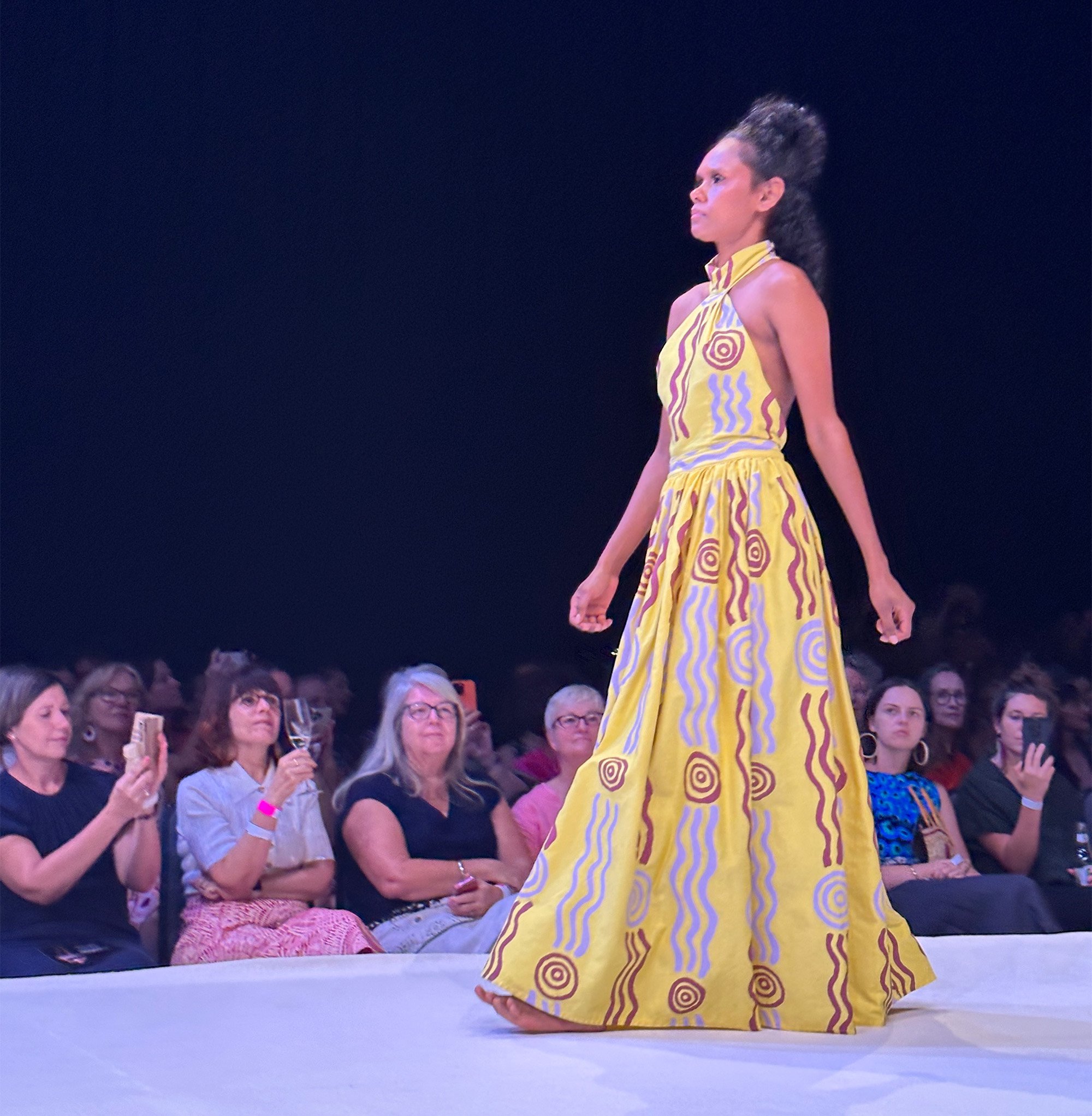

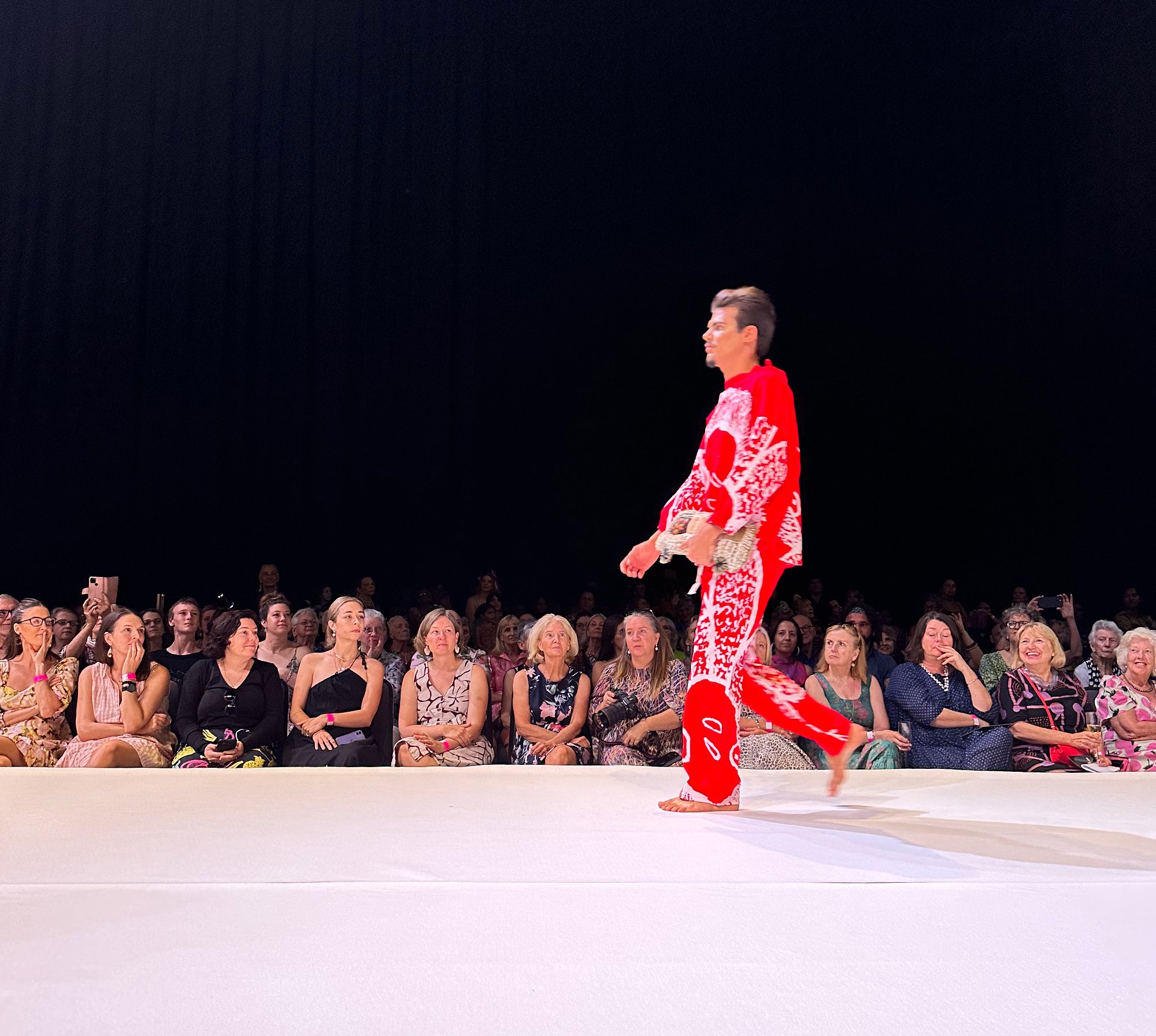

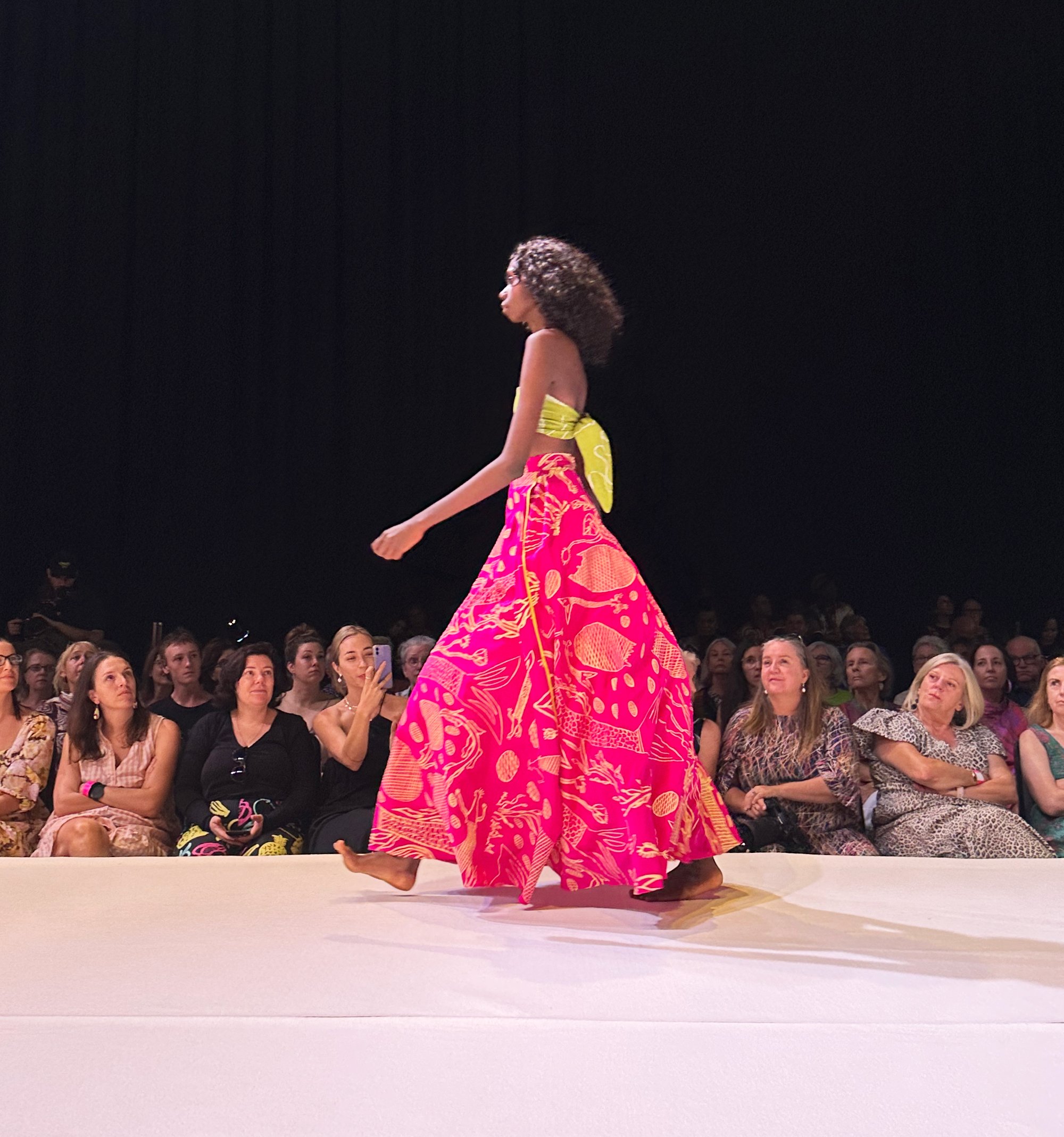

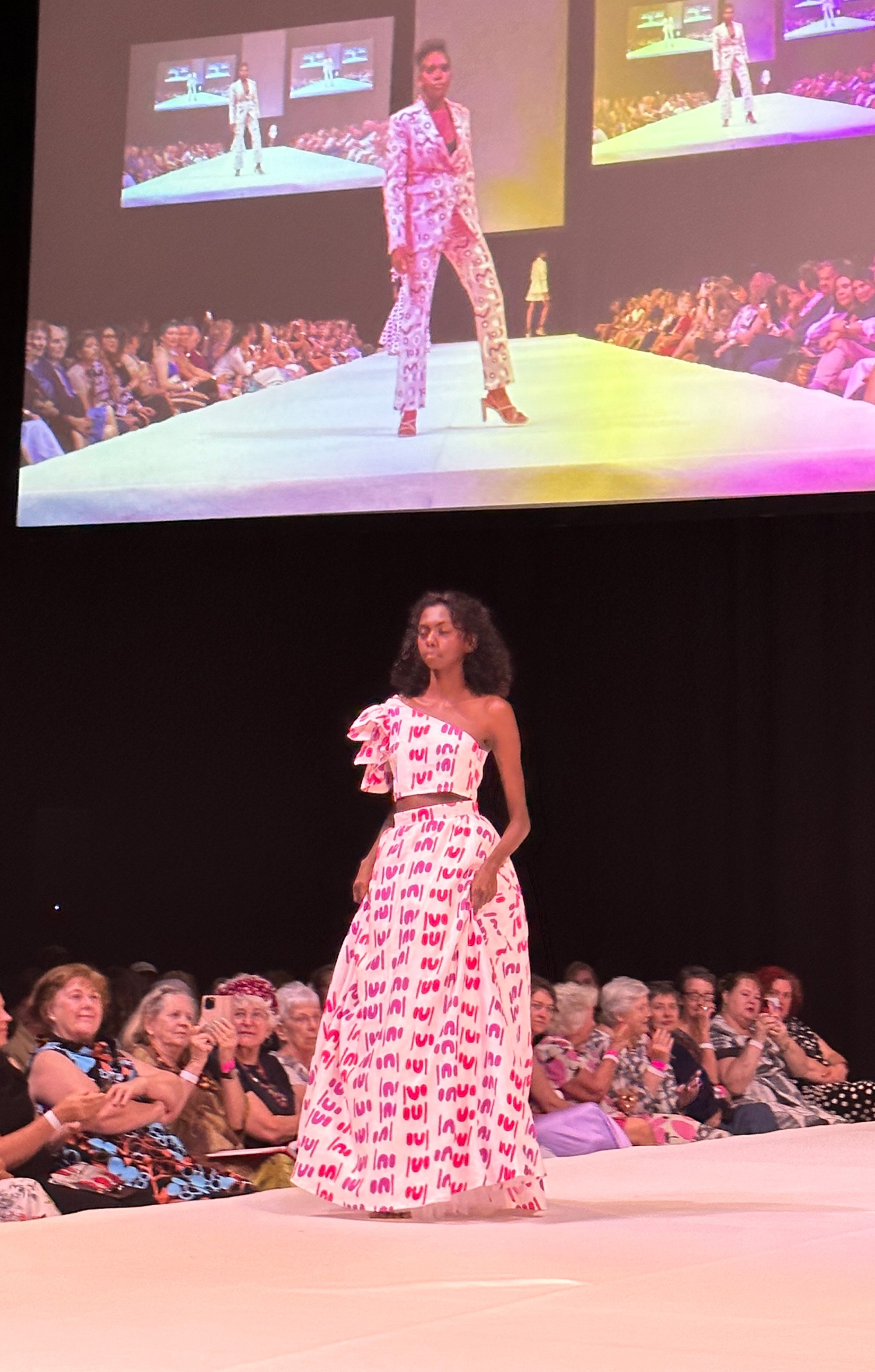
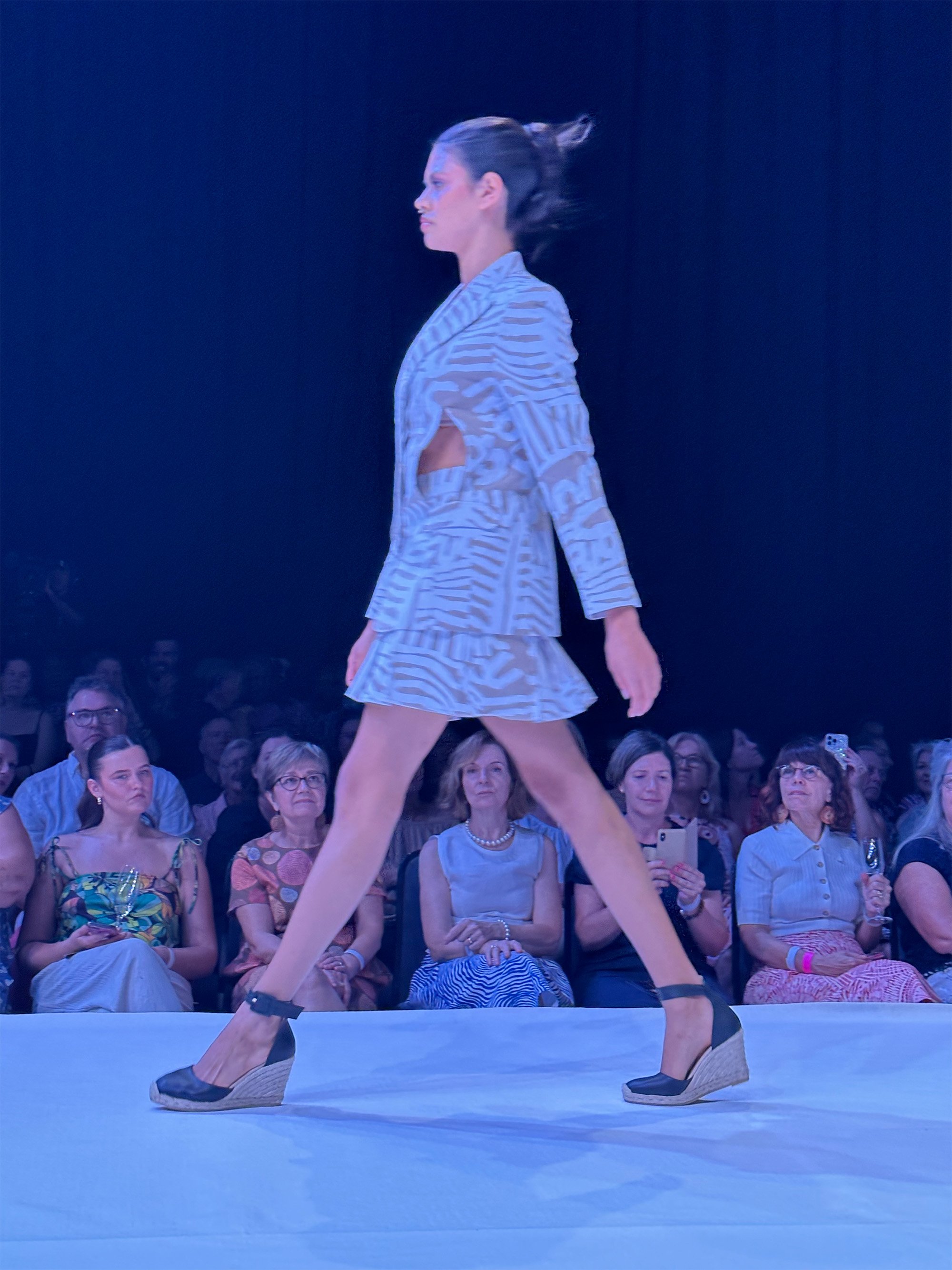
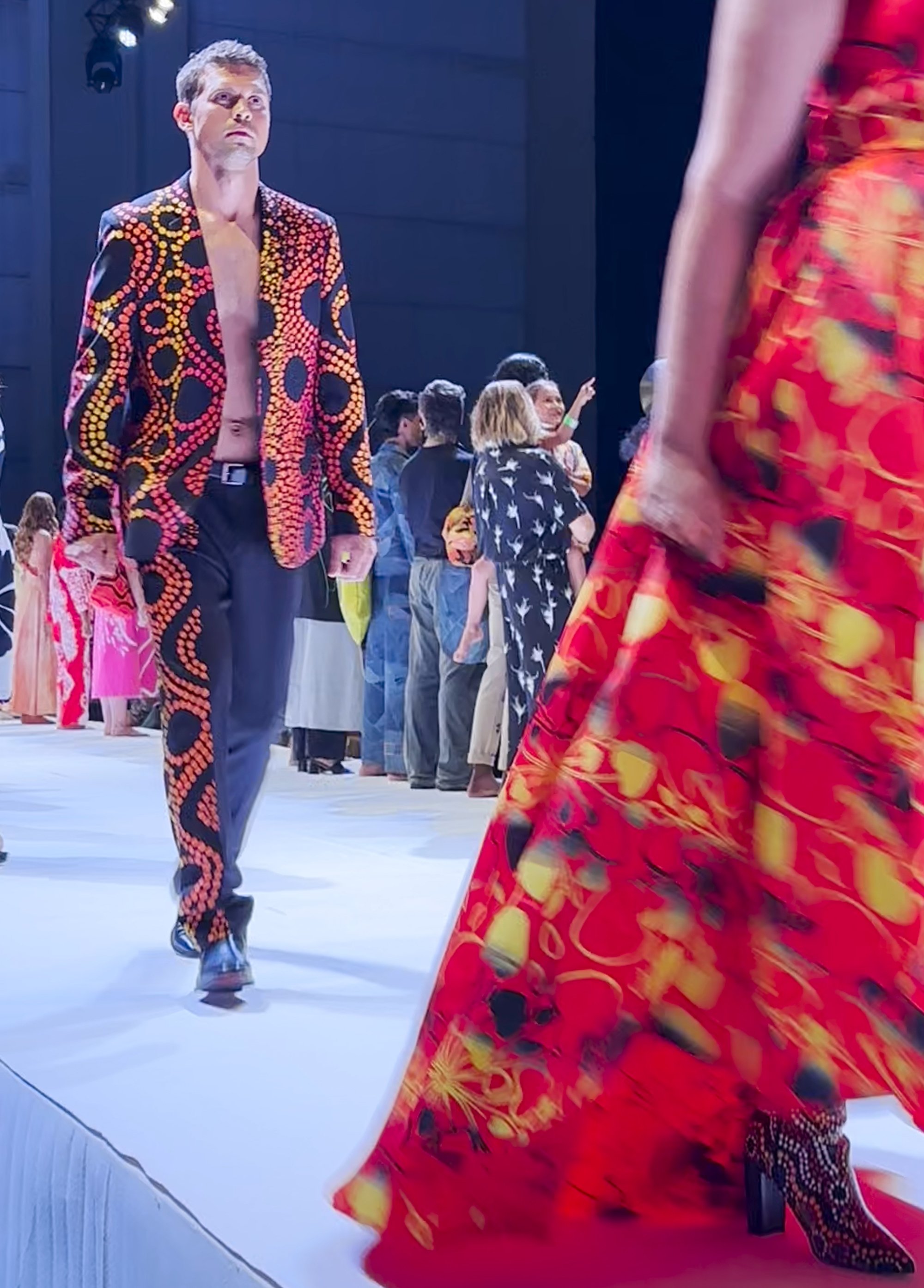
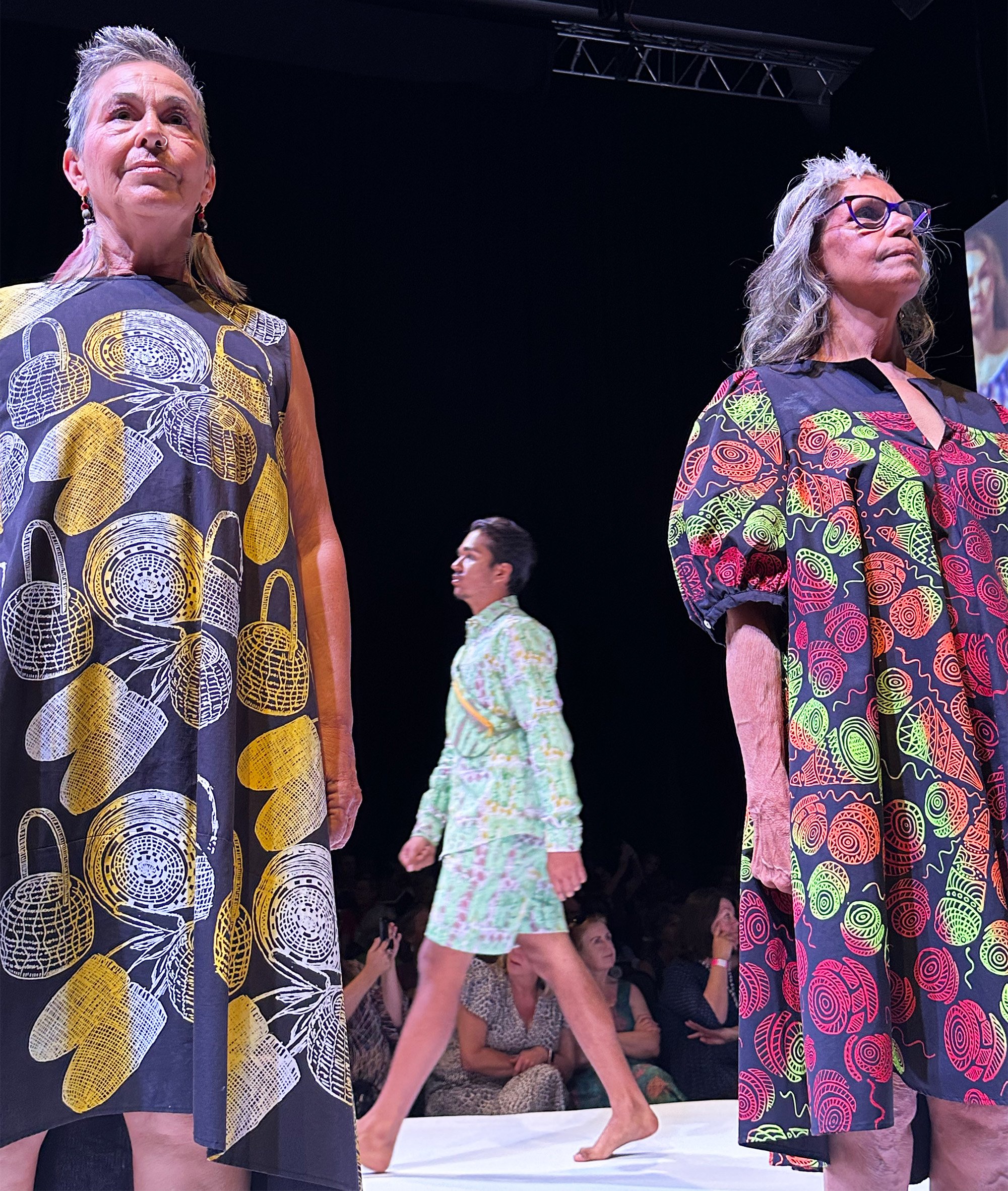

What else can I see in Darwin?
Darwin in August is vibrant, immaculate, bright with flowers and hosts a series of major cultural festivals.
DAAF coincides with the Darwin Festival, the major performing arts event of the Top End. The parks in the down-town area near the Convention Centre are lit up with lights and decorations, there is a relaxed and friendly vibe and you can really see why locals love living in their city. There is much to keep the visitor entertained - attend some free lunch-time live music in deck chairs under beautiful trees near the civic buildings, buy a ticket to a cabaret show in the glass Spiegel tent, or buy some delicious snacks from the food trucks.
There are many interesting sites and spaces to see in Darwin and the multi-ethnic food is delicious.
About Darwin
The originally little settlement of Palmerston sits on Larrakia Country and was established when the British arrived in 1869. Renamed Darwin in 1911, it was always multi-ethnic, with a large Chinese and Greek community. Darwin is a part of the collective Australian memory for two cataclysmic events: the bombing of Darwin by Japan in 1942; and Cyclone Tracey, Christmas Day, 1974.
More buildings survived Cyclone Tracey than I had expected. Colonial era buildings, including St Andrews, date back to 1869. The tropical ‘Residence’ now known as Government House, in beautiful grounds, dates from the 1870s and was rebuilt after the Bombing of Darwin and then Tracey.
Government House, Darwin
Innovations that transformed Australian life such as The Australian Overland Telegraph Line to Java and the World began here in the 1870s.
In the main shopping district, quirky malls join modern top end retailers. If you are looking to spend serious money, Paspaley pearls has a beautiful flagship store in the main street, as does RM Williams. Di Croco in the main street sells crocodile leather goods. The frangipani tree-filled open air Star arcade, on the site of Darwin’s original cinema, is a good stop for coffee, and Darwin has an excellent general bookshop with a focus on the art and nature of the Top End.
There are commercial galleries selling high quality Aboriginal art: one in the DoubleTree Hilton arcade features dances by Tiwi and Bathurst Island men and women during DAAF. I saw an amazing one in which the men mimicked the sound and movement of the Japanese bombers.
The Botanic Gardens include both Australian and exotic plants. If you are in town on a Saturday, Parap Markets are a must for brunch. Food trucks provide famous laksa, curries, the best cut fruit you will try outside South East Asia, and there are often art openings in an adjoining contemporary art space.
George Brown Botanical Gardens, Darwin
At beautiful East Point and Fannie Bay, visit the 1930s tropical managerial class houses facing the ocean, such as Burnett House (1938) now managed by the National Trust. There are also three Singapore-style villas suiting the climate of the tropics. Look for the concrete floor with an inlaid fleur de lys facing north, and imagine listening to the radio as the evening air flowed through the shutters. For garden lovers the colourful croton gardens are an indicator of how the Top End embraces tropical colour.
The Museum and Art Gallery of the Northern Territory houses both the art and social history of the NT. I was very moved by the immersive displays about Cyclone Tracey that hit Darwin on the evening of 24 December 1974. I also enjoyed the giant crocodile, and the history of social life in the NT. The Museum has five galleries holding the major collection of Indigenous Art, which will move to a new purpose built museum in 2025. There are also boats and water craft, natural history and tribal artefacts from the region and the South Pacific.
East Point Military Museum includes the Defence of Darwin experience. This moving immersive experience joins artefacts with word and sound to evoke the terror of the 1942 bombings.
East Point Military Museum, Darwin
If you like planes, as I do, take a short cab ride to see the QANTAS Empire Airways Ltd hangar, 1934, which is now an amazing men’s shed full of historic vehicles and memorabilia.
At the end of the day, have a cocktail or dinner at Fannie Bay looking back at the city lights in the distance. Or a glass of French wine in a historic storehouse built by a wealthy Chinese merchant.
Sunset at Fannie Bay, Darwin
With low humidity and no rain, August is the best time to visit - the sun is warm but it cools down at night to a perfectly even 21. And all around Darwin are views of the ocean meeting the sky, a beautiful limpid blue. Darwin during DAAF has been one of my most rewarding experiences. I had a real sense of how important it was to slow down, engage and listen with our Indigenous Australian brothers and sisters. I found the week a remarkable learning and personal experience. It took me out of my comfort zone and I learned so much about the culture and history of our country.
Dr Peter McNeil is an international fashion historian who has attended DAAF in 2019 and 2023. He has written about it with Indigenous Australian academic Dr Treena Clark for The Conversation. See:
DARWIN & TIWI ISLANDS
Aboriginal Art Fair & Indigenous Fashion Awards
This August, join fashion and design historian Dr Peter McNeil and Aboriginal Kokatha and Wirangu woman Dr Treena Clark to discover a different side of Australia’s Top End. Experience the rich diversity of Aboriginal and Torres Strait Islander art, design and culture at the 18th Darwin Aboriginal Art Fair (DAAF), and enjoy VIP attendance to the iconic Country to Couture Indigenous Fashion Parade.






